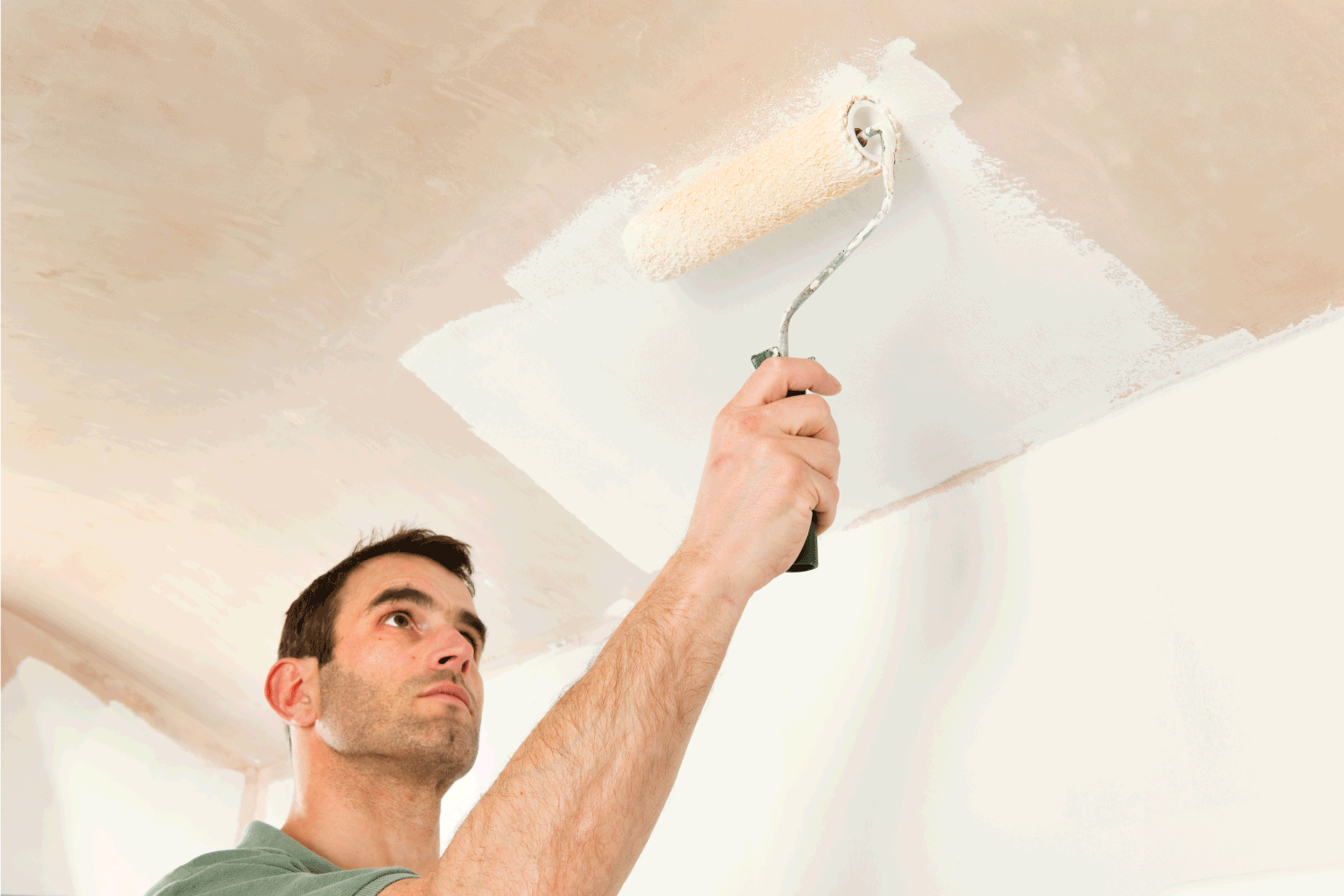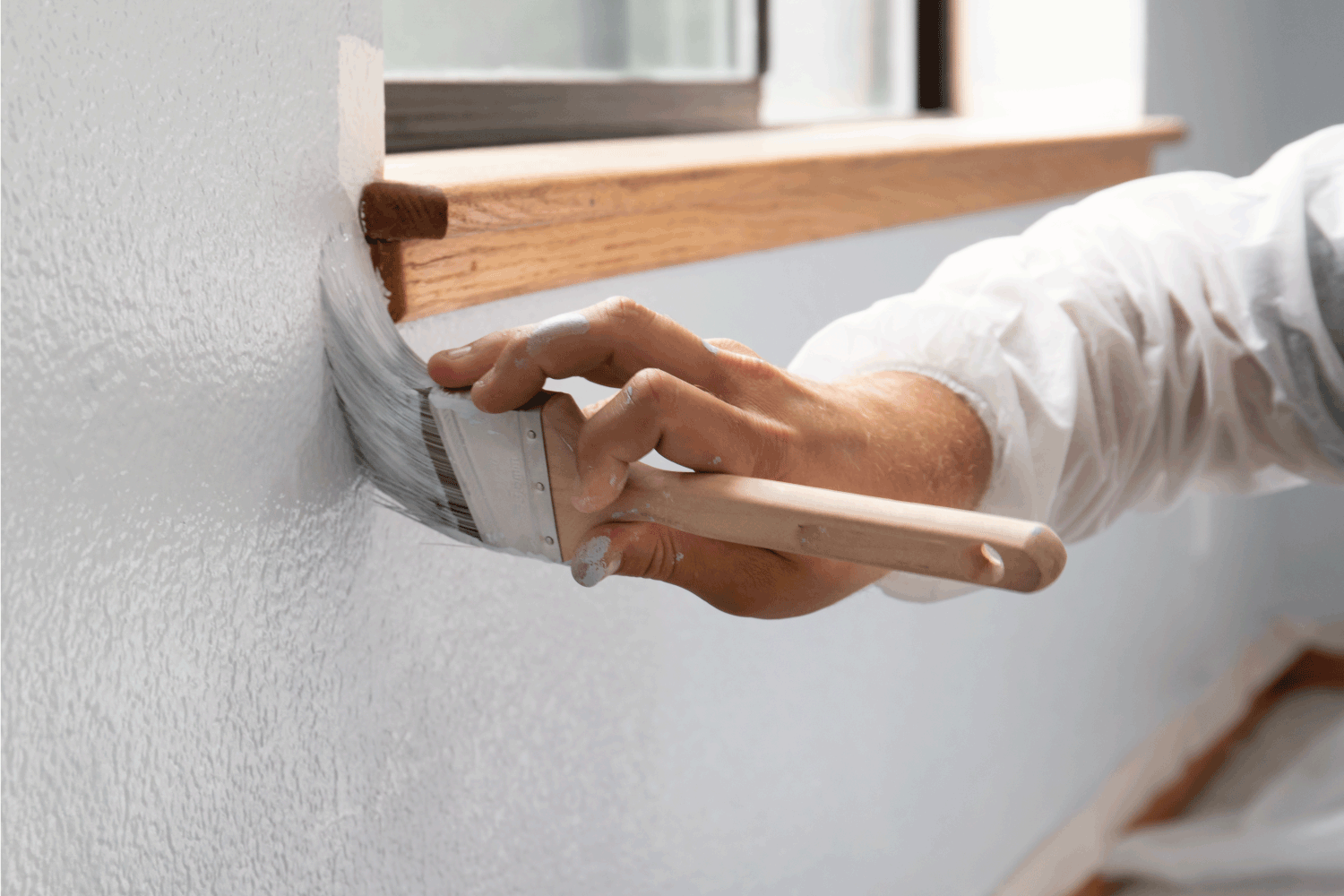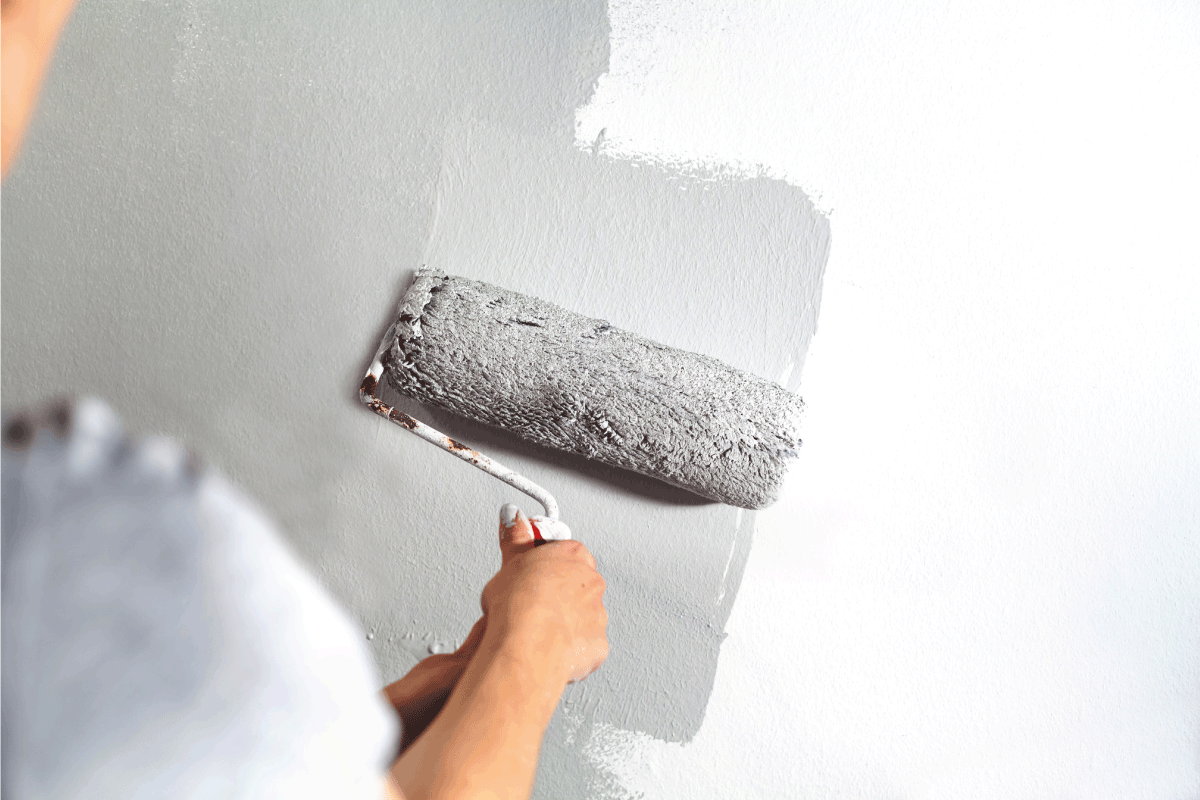When it's your first time dealing with paint, you're likely to run into problems. Maybe you've already experienced how terrible it can be to paint one area ahead of the other. When it comes to painting a room, making that same mistake can be painful for your pockets. Should you paint the ceiling or walls first? If that's your question, we've researched the matter for you!
It's best to paint the ceiling first. This way, you can cover it with two coats of paint if necessary. Since the paint is more likely to splatter when painting the ceiling, starting with the ceiling can make it so that you don't have to revisit the walls to remove the spillage.
Now that you know to paint the ceiling first, you might get curious to know about the correct painting order! Additionally, are there other reasons you should paint the ceiling first? What happens if you paint the walls instead? These are some of the topics we'll discuss further ahead. Without further ado, let's get into it!

Why Do You Paint the Ceiling First?
First things first, let's go over why you want to paint the ceiling first. Consider the working area; walls are easy to paint because you will be working vertically.
Regarding painting the ceiling, the job will be much more difficult. You're not painting with the tools in front of you. Instead, you'll be painting over your head. As you can imagine, that won't fare well with how the paint will react.

We may include affiliate links and curated AI content to highlight top design styles.
In terms of labor, it's a lot less natural to paint overhead than with the tool straight ahead. Once you're painting the ceiling, you'll also have to think about splatter. No matter what you do, there will be some level of spillage.
The paint will go everywhere—like on the walls, floor, etc. So, if you paint the walls first, you'll most likely have to revisit it to clean it up. Are you willing to do double the work even when it's avoidable?
You wouldn't have to worry about messing up the ceiling when painting the walls because, well, gravity! It's much more stress-free when you start with the ceiling. If you're still not convinced, even professional painters would suggest finishing the ceiling first!
When Painting a Ceiling, Where Do You Start?
Now that we know the arguments in favor of painting the ceiling first, how do you get started? As you can guess, you'll need to do a lot of prep work before you begin this project.
You'll need to cover valuables, remove furniture from the room, and make any necessary repairs for damages you might find.

If you have ceiling fixtures, it'll make the job simple if you remove them in the meantime. As far as attire goes, you'll need goggles and a hat to protect yourself from dripping paint.
Of course, some furniture pieces might be too heavy to remove from the room. If this is the case, you can cover them with drop cloths. Once all your valuables have adequate protection, you can begin.
Start by applying primer to the ceiling. As some suggest, you can use an interior latex drywall primer for smooth or lightly-textured ceilings. For ceilings with deeper texture, use a high-build primer.
Cutting In
There are areas that your paint roller won't cover efficiently. And if you attempt to cover it with the roller, some of the paint will transfer onto the walls. One spot that's tough to reach with a roller is the area where the wall meets the ceiling.
You will need to use the technique many refer to as "cutting in" to cover these spots. The purpose of this technique is to prevent any paint from getting on areas you don't want to paint. To do this, you'll need either an angled or straight paintbrush.
Since there's little room for messing up the ceiling with the painting you're going to do in the future, you can cut in as quickly as you want. But to perfect your painting technique, you can always practice cutting in a straight line.
Painting the Ceiling
Once you finish, you can begin the fun part! Painting is tricky to master. Since you're most likely doing this for the first time, the paint job might not come out the way you want it. Of course, if you just want to finish the job, you can paint it however you'd like.
But if you want it to look like a professional's work, there are several tips that you'll need to follow. The first tip would be to work the ceiling in sections.
The ceiling is too large to paint in one stroke of the roller. To make it more manageable, you can portion it into four sections. You'll want to start by getting as much paint as you can onto the ceiling. Then, work your way towards the middle.
Accordingly, you'll return to the starting point to lay the paint off. The term "laying it off" means to redistribute paint in a uniform fashion. This way, there will be no visible marks when it dries.
You'll have to repeat this process for the remaining sections of the ceiling. It might be confusing to know what we're talking about in text form. So, if you need visual guidance, here's a YouTube video demonstrating how to paint a ceiling:
Do You Cut In or Paint Walls First?
With the ceiling painted, it's time to move on to other areas of the room. More specifically, you'll want to consider what it takes to paint the walls. So, do you cut in or paint the walls first?
As mentioned above, cutting in is a technique many DIYers and professionals alike use to prevent paint from getting onto surfaces that abut the area you're painting. In this sense, you'll have to consider what you're going to mess up when painting the walls.
One of the essential concerns mentioned earlier is revisiting an area to correct blemishes. It's the same thought process when you're painting a wall.
However, the main concern this time around would be the ceiling. If you want to avoid getting the wall's paint color on the ceiling, you'll need to cut it in before you start painting.

Cutting In The Walls
One detail you might have noticed was the freedom of cutting in a ceiling in the video above. Since you're going to revisit the wall to apply its own coat of paint, it didn't matter how careful you were cutting in the ceiling.
The same rules won't apply to cutting in a wall. For a seamless transition, you'll need to be more careful. Hence, the need for practice in your technique.
The main tool you'll need for this is a paintbrush—preferably a straight or angled one.
For a better approach than carelessly brushing away at the edge where the ceiling and wall meet, you can gently press the bristles of the brush into the wall.
Gently pressing the brush into the wall creates a blooming effect. It essentially helps create a more reliable coat of paint. Then, move the paintbrush in line with the corner.
General Tips for a Seamless Straight Line
Painting is an important job. It's what makes or breaks a room. If it's your first time painting, a few tips will help when you're trying to cut in a wall. The first thing you want to keep in mind is to use enough paint.
More specifically, you want to make sure the paintbrush isn't lacking any. This way, you won't have to work in small strokes. Small strokes are a problem because you want to maintain a straight line. It's easy to keep a straight line with long strokes.
However, you want to be careful with too much paint. Removing the excess involves fading out the bottom portion of the cutting.
Here's a YouTube video explaining how to cut in properly:
Painting a Room in the Correct Order
Painting doesn't end at the walls. We only have a few pieces of the puzzle. We start by painting the ceiling. It's one of the tough and messy areas to paint. So, it would be best to finish this portion of the job first.
You follow it up by painting the walls. Painting the walls requires more attention because you want to avoid painting a finished ceiling. Now it begs the question—what comes next?
Most would recommend painting the skirting boards next. Once you finish this area, you can move on to the windows and door frames. Finally, you can complete the painting project with the doors.

Final Takeaway
Painting a room is a daunting task. And when you're doing the project yourself, the anxiety can be through the roof. No one wants to mess up on their first try. Hopefully, you can have peace of mind using the information above to help you with the project.
Before you go, do you have other painting concerns? Are you planning to use gray in your color scheme? If you need ideas, you can check out this post:
11 Gray House Paint And Color Scheme Ideas
The house trim is one area you might have left out of your plans. So, if you need ideas on the best paint finish for it, check out this post for inspiration:



